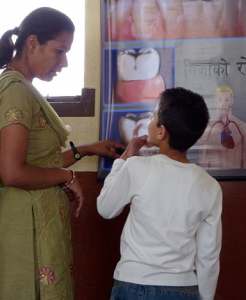5.2: Active Listening
- Page ID
- 77363
\( \newcommand{\vecs}[1]{\overset { \scriptstyle \rightharpoonup} {\mathbf{#1}} } \) \( \newcommand{\vecd}[1]{\overset{-\!-\!\rightharpoonup}{\vphantom{a}\smash {#1}}} \)\(\newcommand{\id}{\mathrm{id}}\) \( \newcommand{\Span}{\mathrm{span}}\) \( \newcommand{\kernel}{\mathrm{null}\,}\) \( \newcommand{\range}{\mathrm{range}\,}\) \( \newcommand{\RealPart}{\mathrm{Re}}\) \( \newcommand{\ImaginaryPart}{\mathrm{Im}}\) \( \newcommand{\Argument}{\mathrm{Arg}}\) \( \newcommand{\norm}[1]{\| #1 \|}\) \( \newcommand{\inner}[2]{\langle #1, #2 \rangle}\) \( \newcommand{\Span}{\mathrm{span}}\) \(\newcommand{\id}{\mathrm{id}}\) \( \newcommand{\Span}{\mathrm{span}}\) \( \newcommand{\kernel}{\mathrm{null}\,}\) \( \newcommand{\range}{\mathrm{range}\,}\) \( \newcommand{\RealPart}{\mathrm{Re}}\) \( \newcommand{\ImaginaryPart}{\mathrm{Im}}\) \( \newcommand{\Argument}{\mathrm{Arg}}\) \( \newcommand{\norm}[1]{\| #1 \|}\) \( \newcommand{\inner}[2]{\langle #1, #2 \rangle}\) \( \newcommand{\Span}{\mathrm{span}}\)\(\newcommand{\AA}{\unicode[.8,0]{x212B}}\)

Figure 1. A doctor stops and listens to a child explain how they feel. (Image Source: Latrobebohs, CC by-SA 3.0)
How to use this method:
- Rogers, C. R., & Farson, R. E. (2015). Active listening. Martino Publishing. Retrieved from www.amazon.com/Active-Listening-Carl-R-Rogers/dp/1614278725.↵
- Hoppe, M. H. (n.d.). Active listening: Improve your ability to listen and lead, first edition. Retrieved from https://www.oreilly.com/library/view/active-listening-improve/9781882197941/xhtml/07_Chapter02.xhtml. ↵
- Rogers, C. R., & Farson, R. E. (2015). Active listening. Martino Publishing. Retrieved from www.amazon.com/Active-Listening-Carl-R-Rogers/dp/1614278725. ↵
- Active Listening. (2002). In D. H. Yarn (Ed.), Dictionary of conflict resolution, Wiley. Wiley. Credo Reference: proxy.lib.iastate.edu/login?url=https://search.credoreference.com/co...itutionId=1110. ↵
- Active Listening. (2019). https://www.cdc.gov/parents/essentials/communication/activelistening.html. ↵


